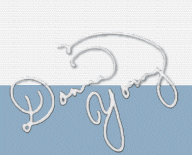Using Art with Science
We all know that drawing specimens, whether living or non-living, will help a student better retain what they are learning in science. They might even understand some things a little better.
 Classic Things to Draw
Classic Things to Draw
Draw and Label
Anatomy: Ear - Eye - Tooth - Cell - Cross-section of Skin Layers - Skeleton - Digestive System - Tongue
Plants: Reproductive systems of flowers
 |
Draw a diagram of a lunar eclipse: Lunar Eclipse. Print this page out for the middle grade children to do. Visit this page for basic information about lunar eclipses. |
 |
Flower with Bees and Pollen
This is a very high resolution image. The drawing is on the upper half
of the sheet with a gray grid overlay. The lower half has only the gray
grid.
Labeled Flower Parts reference sheet |
 |
Skeleton My happy-looking skeleton. This guy is devoid of any lines or markings, so you can use this handout to teach any bone names that are needed. :-) If you want one with lines go to: Apologia General Science |
| Worksheet
- A "color the parts" worksheet
Color the parts. Color the O that is next to the name, then color the body part the same color. O tongue, O larynx, O trachea, O pancreas, O stomach, O small intestine, O rectum, O salivary glands, O pharynx, O esophagus, O lungs, O liver, O gall bladder, O large intestine, O appendix, O anus |


 Value Scale Exercises
Value Scale Exercises
 Part of Lesson Two from Drawing with Children
Part of Lesson Two from Drawing with Children


